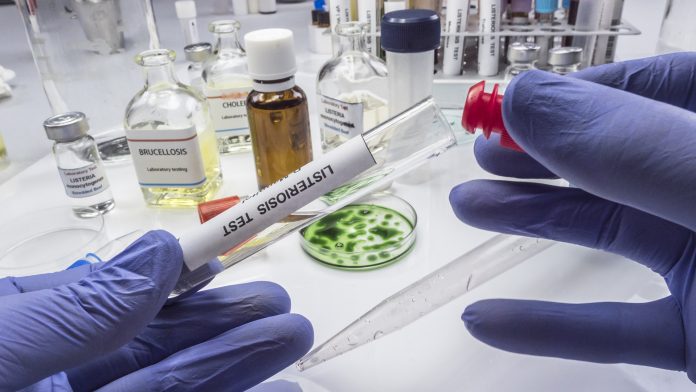
The experts from microbiological testing specialist Nova Biologicals outline the best ways to uphold food safety standards and prevent bacterial infections.
Food standards
Food safety has long been one of humankind’s greatest challenges. From bacterial infections to parasites, contaminated food has caused numerous health problems throughout history. Listeria, E. coli, Salmonella, and mould are just some of the things that can contaminate food, and they can cause issues ranging from stomach pain to more serious health concerns and even death. This is without considering chemical or cross food contamination, which can do much the same, if not worse. To curtail some of these potential dangers, food providers and organisations like the United States Food and Drug Administration (FDA) and the Centers for Disease Control and Prevention (CDC) monitor the quality of food products and the environments in which the food is prepared. However, there is only so much these measures can do, and a large part of fighting these threats depends on consumers and their approaches to food safety.
Understanding cross contamination
Before exploring how consumers can help keep foodborne illnesses in check, it is vital that the scope of these dangers is thoroughly understood, as well as how contamination occurs in the first place. In broad terms, food contamination occurs when something comes into contact with the food, usually on a microscopic level, and renders the food dangerous to consume. Some food contamination may be visibly apparent, such as in the case of mould growing on bread, but often contamination happens at a microscopic level and cannot be detected by the naked eye. In many cases, that contact is enough for pathogens such as bacteria or parasites to thrive, either on the surface or inside the food without any visible change being apparent. If the food is then consumed, the individual would ingest these dangerous microorganisms as well. In the case of cross-food contamination, someone allergic to peanuts could eat from a bag of crisps that contained peanut residue. They could potentially suffer an allergic reaction without knowing why, possibly even causing health workers to misdiagnose the symptoms. While this is less common in packaged goods, people in restaurant kitchens and home kitchens must pay close attention to ensure cross-contamination does not happen whenever they make dishes using foods that are known to cause allergic reactions.
The health risks that may arise from these situations can vary, as there are many potential contaminants as mentioned above, but some symptoms are more common than others. One of the most frequent symptoms of food contamination occurs with food poisoning. Nausea and diarrhoea are widespread among sufferers of food poisoning, and suddenly coming down with either are good indications that one may have ingested contaminated food. Stomach cramps, fever, and abdominal pain are also common symptoms, and consumers should be sure to note possible causes as they appear. In most cases, these symptoms should fade in a few days. However, it is dangerous to assume this will be the case, or that this is an indicator that there won’t be any worse symptoms. In extreme cases, food contamination could lead to organ failure, lasting damage in children, pregnant women, and the elderly, or, in the most severe cases, death. As such, it is important to understand the quality of the food a person is eating before it is ingested.
Available resources
One of the most effective ways for the average person to observe the effects of food contamination is to visit the websites of either the CDC or the FDA and look over the lists of outbreaks in the past. Both websites offer this service, and the data goes back at least ten years. They describe what kinds of outbreaks there were, as well as what the original cause was found to be. The most common pathogens to cause these events were easily identified as Salmonella and E. coli, which are both frequently found in undercooked meat and vegetables, though some outbreaks have been caused by products such as cake mix or even cereal. Less common, but no less concerning, were outbreaks of Hepatitis A caused by frozen strawberries and scallops in 2016. Any of these pathogens could lead to an untold number of health risks in consumers with weaker immune systems, like children or the elderly, but they are far from the most dangerous of the known pathogens. Perhaps the most threatening pathogen, despite not causing nearly as many outbreaks over the last few years, comes from contamination by Listeria.
Listeriosis, one of the more dangerous infections that can arise from food contamination, has occurred several times in 2021 alone. When a person contracts Listeriosis, they are actually being infected by the bacteria Listeria monocytogenes, which is a bacteria capable of surviving without oxygen. Unlike infections such as those caused by E. coli, in which the symptoms will most likely subside in a few days, Listeria can easily cause severe health problems. This is especially true for pregnant women. Since the infection can be transferred to the unborn child, a range of complications from miscarriages to birth defects such as paralysis, seizures, or blindness can result. The infection can threaten the mother too, as pregnant women are about ten times more likely than the average person to contract the disease. Of the outbreaks in 2021, all were related to dairy products, which are one of the most monitored groups of food available. For this reason, outbreaks of Listeria are treated with great urgency and severity, but accidents still happen and constant vigilance is required to ensure future outbreaks don’t occur.
By far the biggest challenge posed by outbreaks of pathogens related to food contamination comes from attempting to identify, isolate, and contain infected products. As tracking of outbreaks occurs after infection numbers begin rising, it can be difficult to narrow down exactly what caused it and where it originated. Even after learning this, efforts to contain the product and prevent future infections are challenged by some consumers continuing to use products despite public health warnings. Either through ignorance of recent events or a refusal to believe health advisories, it is common for outbreaks to continue spreading bacteria after efforts have been made to prevent contaminated products from being sold. One of the most common methods of combatting this is by recalling products from distributors, but that only prevents further selling and cannot fully account for those that have already been sold. Instead, consumers must do their part and pay attention to public health mandates and food recalls by properly disposing of products suspected of carrying hazardous pathogens. If someone is showing symptoms of food-based pathogens, such as nausea, fatigue, fever, or stomach pains, be sure to evaluate what may have caused this and, if necessary, seek medical assistance. If symptoms appear to be linked to a specific food or other product, informing the original seller may help prevent future infections in others.
To better prevent these outbreaks, food providers enlist testing services to monitor both the areas in which they prepare food and the food itself. Tests ranging from the effectiveness of sterilisation products to the quality of the clothing worn by those handling the food help pinpoint exactly where contamination could occur and correct the problem before it happens again. This, along with the many laws passed by organisations like the FDA, helps to minimise these threats as much as possible on the corporate end. This is not the only way to avoid foodborne illness, nor is it the most important step. Instead, it falls on the shoulders of those who make use of the food to follow proper cooking and handling methods.
Food safety at home
For a home kitchen, this can mean everything from making sure to wash raw fruits and vegetables thoroughly to using clean and sterile utensils and cooking areas. As highlighted before, cross-food contamination can occur if multiple types of food are being made in the same area or with the same tools, but cleaning up traces of food after use can help to minimise that possibility. Cooking meats and fish to their appropriate temperatures is another common way to eliminate possible bacteria and parasites, but it is important to note that meats have different temperatures at which each is considered fully cooked. If someone is unsure about the appropriate temperature for a certain meat, checking with the CDC, FDA, (such as the guidelines published on the FDA website) or other similar health organisations can supply the correct answer. Keeping foods refrigerated can extend the lifespan of a product as well as minimise possible contamination while the food is stored. Finally, and this may appear to be the most obvious, washing one’s hands both before and after handling food is an excellent way to reduce the risk of food contamination. While this is especially true in regard to handling raw food, any food can carry microorganisms that could endanger someone’s health.
A continued threat
In conclusion, food contamination has been and will continue to be a threat to public safety that cannot be ignored. Though it may sometimes seem that modern innovations in medical and agricultural technologies might provide ways to stop outbreaks from happening, the truth is that contamination can always occur. The most important response a consumer can have in these situations is to follow public health mandates and heed product recalls. While it may be inconvenient to see a favourite brand of ice cream be recalled or a specific manner of cooking be frowned upon for safety reasons, it is far better than the widespread infections that can occur if they are disregarded.









